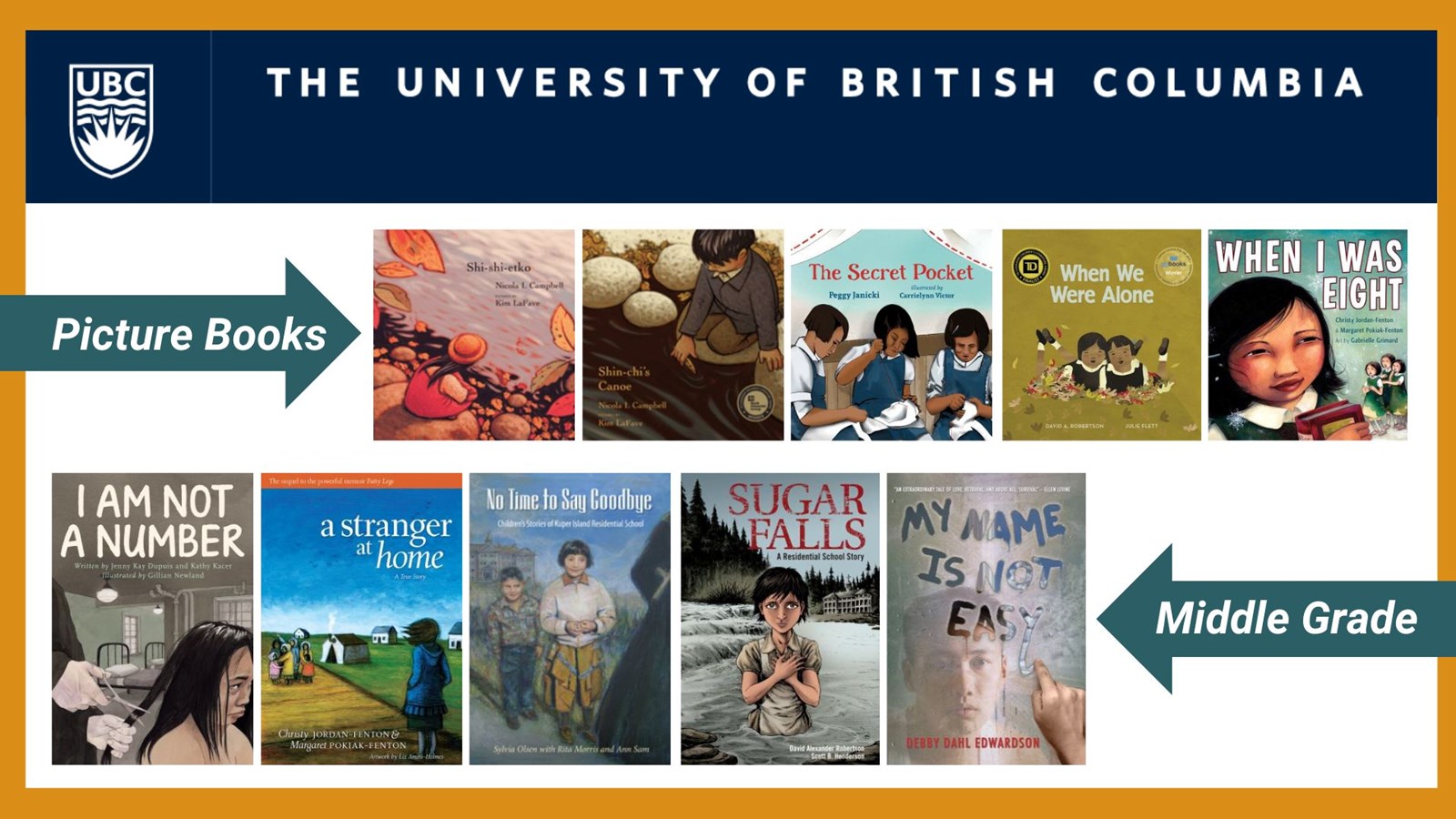Indigenous Children's Literature

Since the Truth and Reconciliation Commission's findings, more children's books are being published about the horrors of Canada's Indian Residential School System. Many of the books on this list are written by survivors, sharing their personal experiences with residential schools. Books 1 through 5 are picture books appropriate for students in grades K-3. Books 6 through 10 are recommended for middle school students.
- The Secret Pocket (ages 6-8) by Peggy Janice (Author); Carrielynn Victor (Illustrator): The true story of how Indigenous girls at a residential school sewed secret pockets into their dresses to hide food and survive.
- When We Were Alone (ages 6-8) by David A. Robertson (Author); Julie Flett (Illustrator): A young Indigenous girl who is curious about why her grandmother always wears colourful clothing, keeps her hair long, speaks Cree, and loves to spend time with her brother. Her grandmother explains how residential schools enforced conformity and tried to destroy the culture of Indigenous residents.
- Shi-shi-etko (ages 4-7) by Nicola I. Campbell (Author); Kim LaFave (Illustrator): In just four days young Shi-shi-etko will have to leave her family and all that she knows to attend residential school. She spends her last days at home treasuring the beauty of her world. Her mother, father and grandmother, each in turn, share valuable teachings that they want her to remember.
- Shin-Chi’s Canoe (ages 4-7) by Nicola I. Campbell (Author); Kim LaFave (Illustrator): This story follows the two siblings who are heading off to residential school, Shi-shi-etko for year two and Shin-chi for the first time. When the cattle truck arrives to which them away, Shi-shi-etko tells her brother of all the things he must remember and keep in his heart until he gets to return home again.
- When I Was Eight (ages 6-9) by Christy Jordan-Fenton and Margaret Pokiak-Fenton (Authors); Gabrielle Grimard (Illustrator): Olemaun is eight and knows a lot of things. But she does not know how to read. Ignoring her father's warnings, she travels far from her Arctic home to the outsiders' school to learn.
- I Am Not a Number (ages 7-11) by Dr. Jenny Kay Dupuis and Kathy Kacer (Authors); Gillian Newland (Illustrator): When Irene is removed from her First Nations family to live in a residential school, she is confused, frightened and terribly homesick. She tries to remember who she is and where she came from despite being told to do otherwise. When she goes home for summer holidays, her parents decide never to send her away again, but where will she hide and what will happen when her parents disobey the law?
- A Stranger at Home: A True Story (ages 9-12) by Christy Jordan-Fenton and Margaret Pokiak-Fenton (Authors); Liz Amini-Holmes (Illustrator): After two years in Catholic residential school, 10-year-old Olemaun returns to Tuktoyaktuk on Canada's Arctic coast, a stranger to her friends and family, unaccustomed to the food and clothing and unable to speak or understand her native language.
- No Time to Say Goodbye (ages 9-12) by Sylvia Olsen (Author); Rita Morris and Ann Sam (Illustrators): A fictional account of five children sent to aboriginal boarding school, based on the recollections of a number of Tsartlip First Nations people.
- Sugar Falls: A Residential School Story (ages 14+) by David A. Robertson (Author); Scott B. Henderson (Illustrator); Donovan Yaciuk (Colourist): Based on the true story of Betty Ross, an elder from Cross Lake First Nation, Sugar Falls tells the story of Betsy who, at eight years old, was sent to residential school. While there, she is abused and suffers, but the words her father told her keeps her spirit and her hope alive.
- My Name is Not Easy (ages 12-18) by Debby Dahl Edwardson: In 1960, a 12-year-old boy from the Iñupiaq tribe changes his name to Luke because he knows the white teachers at his new school will not know or care to learn how to pronounce his real name. Luke and his younger brothers Bunna and Isaac leave home for boarding school at Sacred Heart School.
Curated Bibliography on the Indian Residential School System by the University of British Columbia. For more information, please visit: https://guides.library.ubc.ca/Indigenouschildrensliterature/irss



